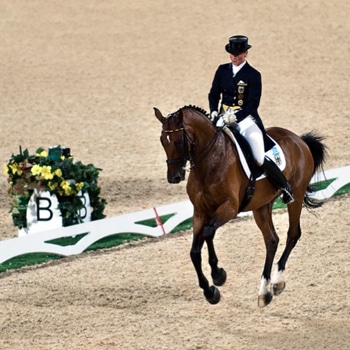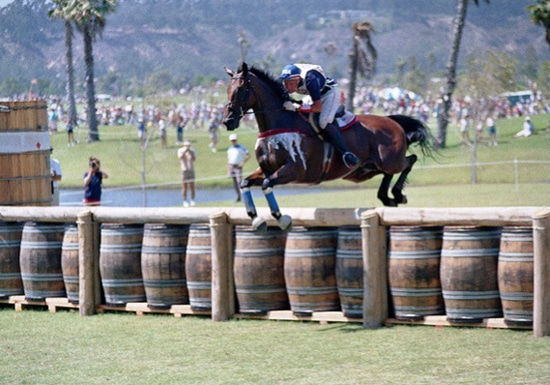
Dressage – Hong Kong Olympics
The 2012 summer Olympics in London marked a milestone for international equestrian sport. The first Olympic Games to include dressage, show jumping and eventing took place a century before at the Stockholm, Sweden games. The three equestrian events have been held at every Olympics since then.
1. What was the year the equestrian events of dressage, show jumping and eventing were included in the Olympics for the first time?
The original Olympic equestrians were military riders. Beginning with the 1952 games, the events were opened to civilians and to women, making equestrianism the first sport where men and women competed against each other.
2. How many years went by before the events were opened to everyone?
Olympic dressage is scored by 5 International Equestrian Federation judges that each sit in a different position around the arena. Scores are based on the accuracy and brilliance of each required movement of the assigned test and rated on a scale of 0 to 10. Dressage placings are determined by the highest scores with 100% being the ideal score.
Olympic dressage is held in a flat 20 X 60 metre arena.
3. Calculate the area of the arena.

4. Calculate this height and width in feet. (1 m = 3 feet 3 3/8 inches)
Courses are designed with many tricky turns and colorful obstacles challenging both the mental and physical agility of horse and rider. The horse/rider teams must finish within a set time and penalties are given for knocking down rails and other faults.
Three day eventing is held over three days and consists of three disciplines: cross country jumping, dressage and stadium jumping. The cross-country phase takes place over a course of natural and man-made objects. There can be up to 40 obstacles that horses must jump or go through over the course that is up to four miles long.
Scores are based on refusals, coming in under or over a set time and falls of the rider.

Each country may have a maximum of 3 riders competing for individual medals in the dressage competition. There may be 4 riders from each country in jumping and 5 in eventing competing for individual medals.
1. What was the year the equestrian events of dressage, show jumping and eventing were included in the Olympics for the first time?
Answer: 1912.
2. How many years went by before the events were opened to everyone.
Answer: 1952 – 1912 = 40 years.
3. Calculate the area of the arena.
Answer: 40 x 60 = 2400 square metres.
4. Calculate this height and width in feet. (1 m = 3 feet 3 3/8 inches).
Answer: 2 x 3 feet 3 3/8 inches = 6 feet + 6 inches + 6/8 inches = 6 feet 6 ¾ inches.
Photos:
Prancer by Craig Maccubbin, CC BY 2.0
Olympic Gate by Craig Maccubbin, CC BY 2.0
1984 Olympics: Equestrian Eventing (10 of 37) by Virginia Travis, CC BY-ND 2.0







Oh, yes! I was really enthralled as soon as you talked about how women can also be dominating in international equestrian sectors too. My daughter has been into horse-riding ever since she joins her college polo team last summer. I’ll make sure she gets more information about this matter so she can increase her level of expertise pretty soon.